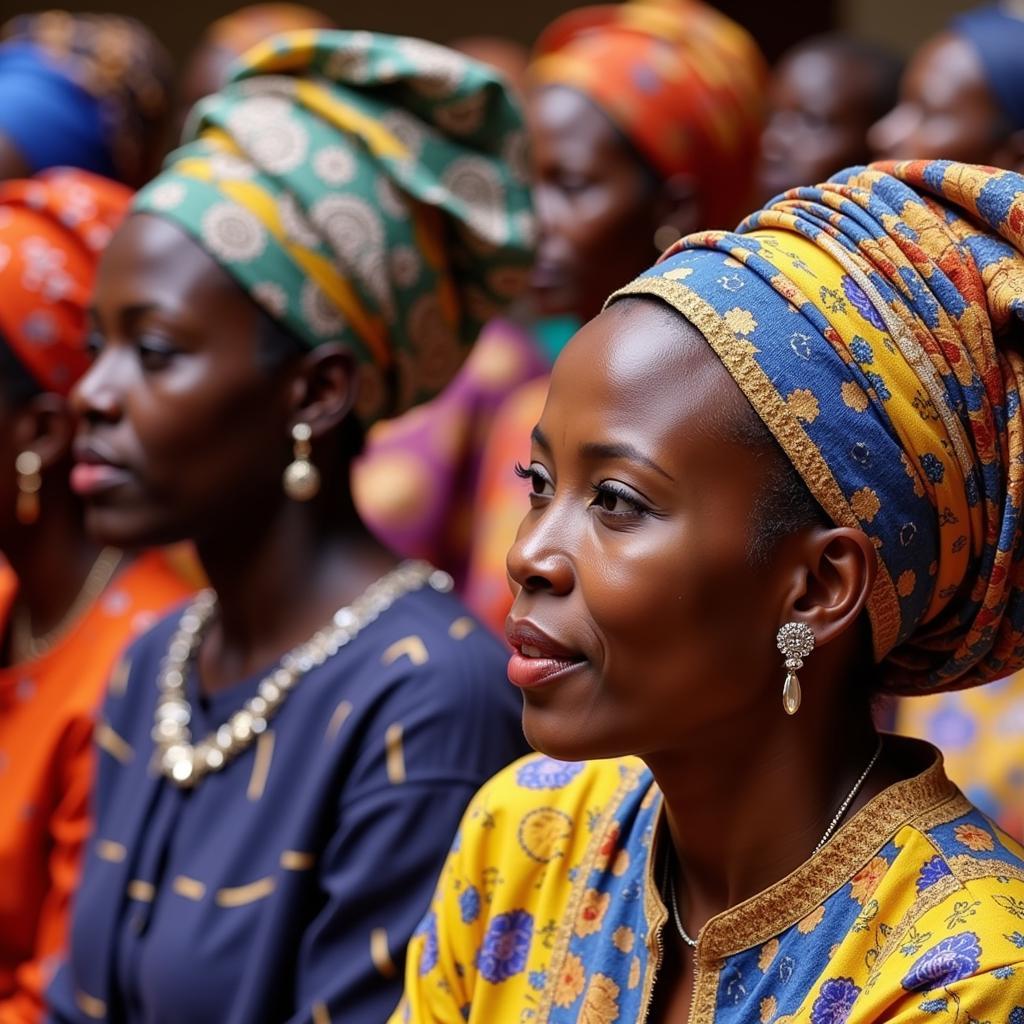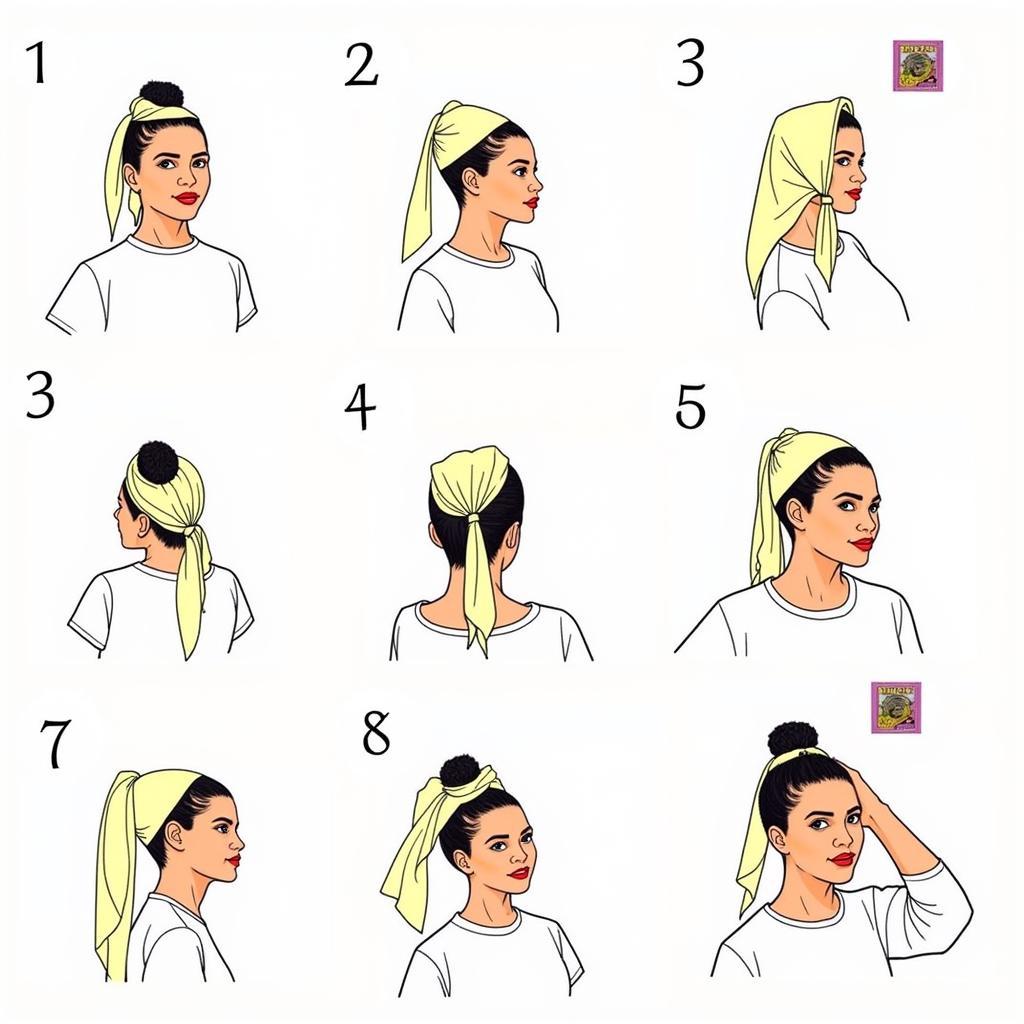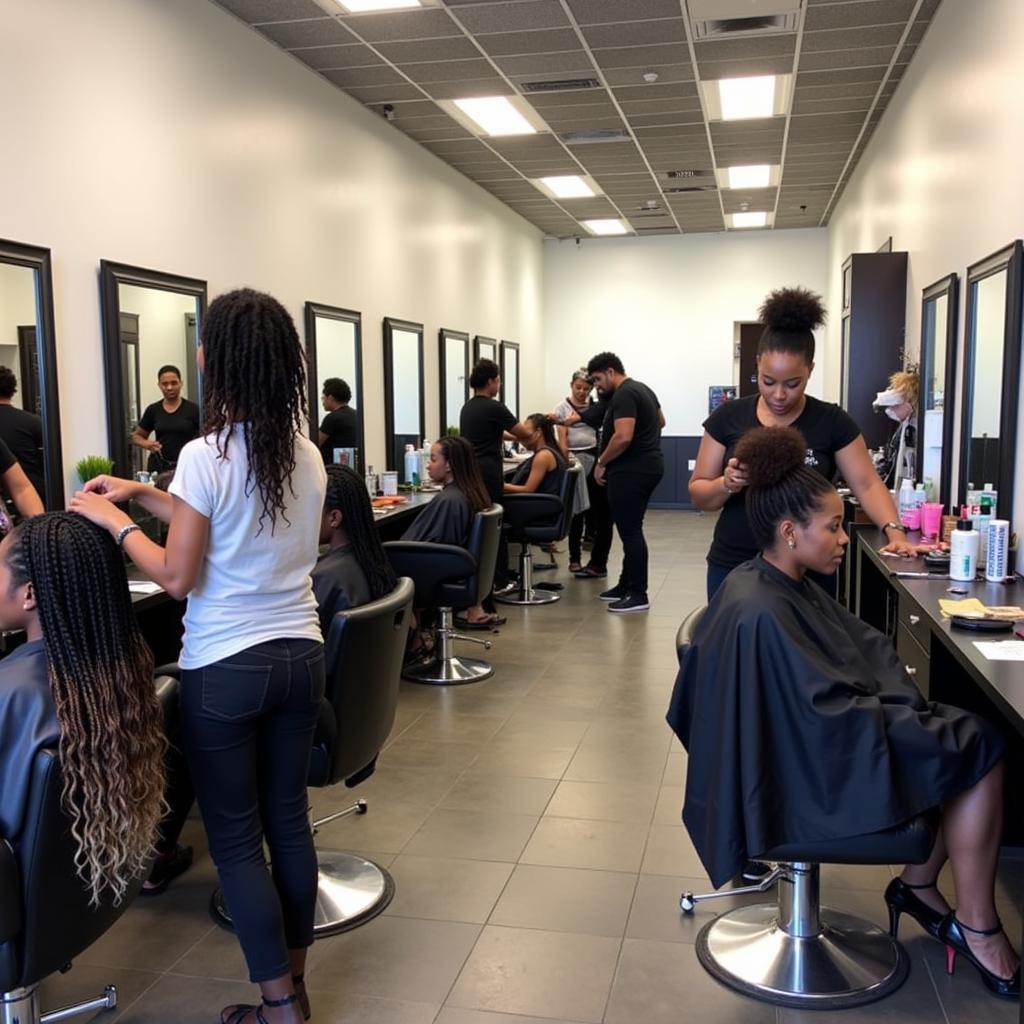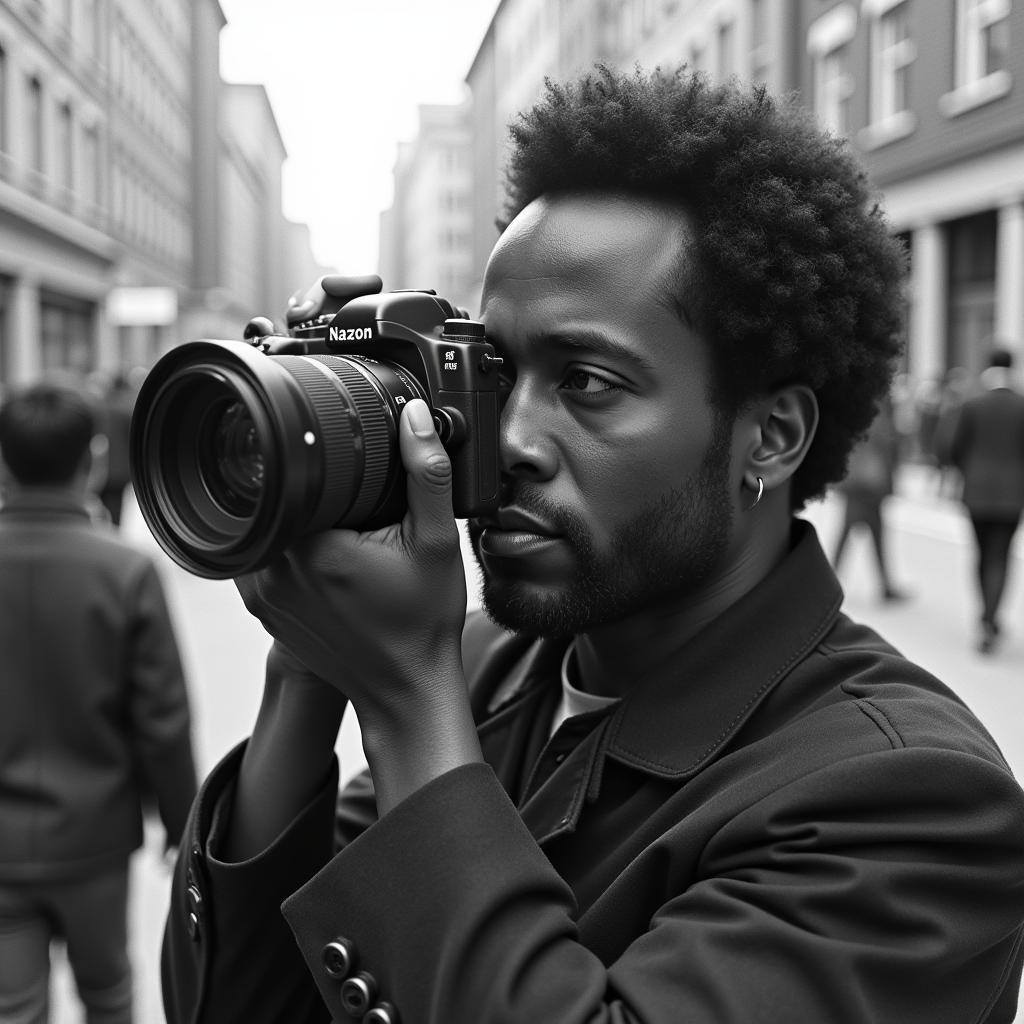The Majestic African Head Tie: History, Culture, and Style
The African Head Tie, a vibrant and versatile piece of cloth, is much more than just a fashion accessory. It’s a powerful symbol of cultural identity, a testament to artistry, and a reflection of a woman’s status, age, and even mood across the diverse continent of Africa. From Gele in Nigeria to Dhuku in Zimbabwe, these headwraps tell stories, embody traditions, and continue to evolve in contemporary society.
As a symbol of respect and elegance, the African head tie, also known as a headwrap or headscarf, holds significant meaning across the African continent. Its history is as rich and varied as the cultures that embrace it. The head tie transcends mere fashion, serving as a powerful symbol of status, spirituality, and even marital status.
Exploring the Rich History of the African Head Tie
The origins of the African head tie can be traced back centuries, with evidence suggesting its use in various forms across different regions. Some scholars believe it originated as a practical measure to protect hair from the harsh African sun or dust. Others link it to spiritual beliefs and practices, where the head was considered a sacred part of the body. Regardless of its precise beginnings, the head tie quickly evolved into a powerful symbol of identity and community. It became intrinsically linked with femininity, often marking rites of passage, celebrating milestones, and showcasing a woman’s creativity and individuality.
Check out this resource on African tribal costume.
The Cultural Significance of the African Head Tie
The African head tie is more than just a piece of cloth; it’s a symbol laden with cultural meaning. In many communities, it represents a woman’s marital status, her age, and her social standing. Different tying styles and colors can communicate specific messages, from mourning to celebration. For example, in some West African cultures, a head tie tied to the right signifies a married woman, while one tied to the left indicates singlehood. The intricate folds and elaborate designs also demonstrate a woman’s skill and artistry.
 African Head Tie Cultural Significance in Ceremonies
African Head Tie Cultural Significance in Ceremonies
The way a head tie is tied can express various emotions and messages. A brightly colored and elaborately tied head tie might be worn for a joyous occasion, while a more subdued style could indicate mourning or solemnity. Even the choice of fabric can be significant, with some materials reserved for special events or rituals.
For some helpful information about African American wigs, check out African American lace front wigs for sale.
How to Tie an African Head Tie: A Beginner’s Guide
While the specific techniques vary across different regions and styles, the basic principles of tying an African head tie remain the same. The key is to have a large rectangular piece of fabric, typically made of cotton, silk, or other lightweight materials.
Step-by-Step Instructions:
- Fold the fabric in half lengthwise.
- Place the center of the folded fabric at the nape of your neck.
- Bring the two ends of the fabric up to your forehead.
- Cross the two ends over each other, creating a knot or twist.
- Wrap the ends around your head, creating the desired shape and style.
- Tuck the loose ends into the folds of the head tie.
There are countless variations on this basic technique, allowing for endless creativity and personalization.
 African Head Tie Tying Tutorial Step by Step guide
African Head Tie Tying Tutorial Step by Step guide
The African Head Tie in Contemporary Fashion
The African head tie continues to evolve in contemporary fashion, both within Africa and globally. Designers are incorporating traditional techniques and fabrics into modern designs, creating stunning headpieces that celebrate cultural heritage while embracing current trends. Celebrities and fashion icons are also embracing the head tie, bringing it to a wider audience and showcasing its versatility and elegance. From casual everyday wear to red carpet events, the African head tie has become a powerful statement of style and identity.
You can find more resources about African children’s clothing here: African kids tribe dress kids.
What does the African head tie symbolize?
The African head tie symbolizes various things depending on the culture and context, including a woman’s marital status, social standing, and even her mood. It can also represent tradition, spirituality, and beauty.
Where can I learn more about African head ties?
Numerous online resources, books, and cultural centers offer information on the history, significance, and tying techniques of African head ties. You can also learn from videos and tutorials demonstrating different styles.
Why are African head ties important?
African head ties are important because they represent a rich cultural heritage, embody artistic expression, and serve as a powerful symbol of identity for women across Africa.
Are there different types of African head ties?
Yes, there are many different types of African head ties, varying in style, fabric, and name depending on the region and culture. Some popular examples include the Gele in Nigeria, the Dhuku in Zimbabwe, and the Turban in East Africa.
Conclusion
The African head tie is more than just a fashion accessory; it’s a symbol of cultural pride, artistic expression, and feminine power. From its rich history to its contemporary interpretations, the head tie continues to evolve and inspire, connecting generations of women across the African diaspora. By understanding the significance and artistry behind this beautiful headwear, we gain a deeper appreciation for the diverse cultures and traditions of Africa. Explore the beauty and symbolism of the African head tie and discover its timeless appeal.
FAQ
-
What is an African head tie? It’s a versatile piece of cloth worn on the head by women in Africa, serving various cultural and stylistic purposes.
-
What does it symbolize? It can symbolize a woman’s marital status, social standing, religion, and even her mood.
-
How is it worn? It’s wrapped and tied around the head in various styles, depending on the culture and occasion.
-
What are the different names for it? It has various names across Africa, including Gele, Dhuku, and Turban.
-
Where can I buy one? African head ties can be purchased online, in African markets, and from specialist retailers.
-
Can men wear head ties? While less common, men in some African cultures also wear headwraps, often for religious or ceremonial purposes.
-
How do I learn to tie different styles? Numerous online tutorials and videos can teach you different tying techniques.
For further assistance, please contact us at:
Phone: +255768904061
Email: [email protected]
Address: Mbarali DC Mawindi, Kangaga, Tanzania.
We have a 24/7 customer service team.


